-
Day of "solar" soldiers nears
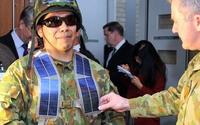
Researches develop wearable light-weight solar panels which will allow soldiers to generate power in the field and reduce the need for batteries for their electronic devices; they will also establish a power supply that keeps electronic devices operational throughout the duration of missions
-
-
Marines deploy bomb-sniffing dog alternative
When bomb-sniffing dogs at Camp Lejeune, the Marine base in North Carolina, are unavailable, military police turn to Fido; the Fido XT Explosives Detector is a handheld device that is capable of sniffing out explosives or residuals in vehicles
-
-
New material dramatically increases explosive force of weapons
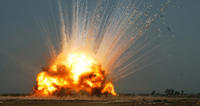
A revolutionary material that will replace steel in warhead casings will bring added lethality and increase the likelihood of a hit on an enemy target; by combining several metals with standard manufacturing techniques, High-Density Reactive Material (HDRM) has the potential dramatically to increase the explosive impact of most weapons with little or no compromise in strength or design
-
-
Statistics helps calculate uncertainty of aging U.S. nukes
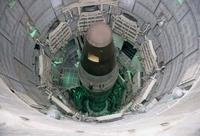
How do you test a not-so-young nuclear stockpile for the effects of age when you cannot detonate any for the sake of finding out? The U.S. government has not conducted live nuclear tests since the early 1990s, but a BYU scientist offers solid answers — based on statistical analysis and without setting off any weapons
-
-
Industry: government hampering efforts to fight counterfeit chips

Representatives from the semiconductor industry said that new Treasury Department and U.S. Customs and Border Protection (CBP) policies have made it difficult to assist the Pentagon in its struggle to keep counterfeit computer components out of its supply chain; Brian Toohey, the president of the Semiconductor Industry Association, a lobbying group, said that new policies introduced in 2008 by the Treasury Department and CBP have made it difficult for manufacturers to identify counterfeit products
-
-
Thales’s Liberty LMR completes Department of Interior tests

Thales’s Liberty LMR has passed U.S. Department of Interior tests; the radio had earlier been approved for Law Enforcement and Tiers 1, 2, and 3; the company says the Liberty LMR, a software-defined radio solution, enables interoperability across all public safety bands, linking government agencies and first responders with a single portable radio
-
-
Research inspires robotics design for medicine, military
A pathogen that attacks the small intestines of humans and animals is serving as the inspiration for developing robots that can fight disease and aid in military operations; ror 250 years, scientists have tried to understand how the microorganism is able to attach to a multitude of surfaces and swim in harsh environments — enabling it to infect many kinds of species while most parasites have specific hosts
-
-
Blast gauge gives medics, doctors critical information
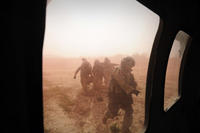
Researchers are working to enhance the safety of soldiers in the field through the development of a device that monitors the physical impacts of exposure to an explosive blast; 188,270 service members have suffered a traumatic brain injury in the last decade; the extent of injury is often difficult to discern, making diagnosis and selection of appropriate medical treatment challenging
-
-
Filipino man guilty of selling UAV on eBay
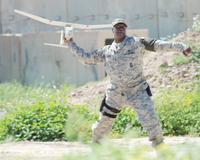
Last week a Filipino man pleaded guilty to violating arms export and smuggling laws by selling parts from an unmanned aerial vehicle (UAV) on eBay; in February, DHS officials arrested Henson Chua of Manila, Philippines after he shipped undercover agents a three-foot long, hand-launched, computer-controlled RQ-11A/B Raven surveillance drone
-
-
Where have Libya's antiaircraft missiles gone?
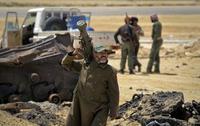
U.S. government officials fear that more portable anti-aircraft missiles may have slipped into the wrong hands or been sold in the black market after rebels in Libya raided one of Colonel Muammer el Qaddafi’s munitions depots; late last month rebels captured the city of Ga’a which contained an ammunition depot that housed Man-Portable Air-Defense Systems, lightweight surface to air missiles known as Manpads; in the ensuing chaos, the depot was raided and crates of weapons disappeared with no record of where they went
-
-
Expanding Yuma flight testing schedule for Argus UAV
The World Surveillance Group (WSGI) revealed its plans of extending the flight testing schedule for its strange-looking Argus One UAV at the Yuma facilities at the U.S Army grounds in Arizona
-
-
Students develop landmine detection robot
A team of Texas A&M University at Qatar students and faculty has developed a state—of-the-art landmine detection robot as part of the NI Mine Detection Robot Design Contest; The competition challenged engineering students in the Middle East to work toward solutions to the real-life landmine problem that the Arab region and other areas face in the aftermath of conflict
-
-
Old fashioned methods best for detecting IEDs
U.S. troops in Afghanistan and Iraq have resorted to an old method to detect improvised explosive devices (IEDs); using long poles with hooks on the end, troops feel around in the dirt to detect any IEDs
-
-
Too much armor hampered French
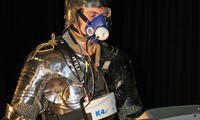
The French may have had a better chance at the Battle of Agincourt had they not been weighed down by heavy body armor; during warfare in the fifteenth century, soldiers wore steel plate armor, typically weighing 30-50 kg; this may have been a contributing factor in whether an army won or lost a battle
-
-
WWII bombs still plague Germany
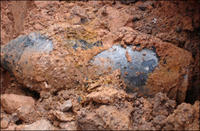
For one bomb squad in Germany the Second World War never ended; members of Germany’s War Ordnance Disposal Service are racing against time to locate and safely defuse the hundreds of thousands of unexploded bombs dropped by Allied war planes that still litter the country
-
More headlines
The long view
Bookshelf: Smartphones Shape War in Hyperconnected World
The smartphone is helping to shape the conduct and representation of contemporary war. A new book argues that as an operative device, the smartphone is now “being used as a central weapon of war.”
